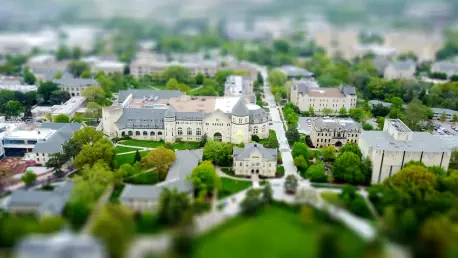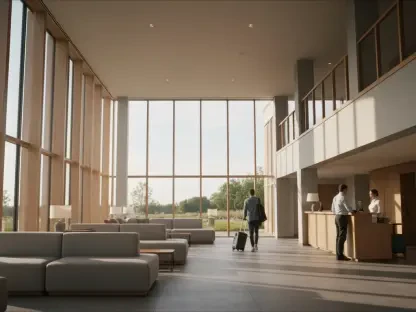I’m thrilled to sit down with Katarina Railko, a seasoned expert in hospitality with a deep-rooted passion for travel and tourism. With her extensive background in the industry and a keen eye for unique cultural experiences, Katarina has become a trusted voice in entertainment and events, often spotlighting hidden gems like US university campuses. Today, we’ll dive into why these iconic institutions are must-visit destinations for travelers, exploring their vibrant traditions, storied histories, and unparalleled atmospheres.
What draws travelers to US university campuses as unique destinations compared to other American attractions?
I think what sets US university campuses apart is their ability to feel like self-contained worlds. They’re not just places of learning; they’re like small cities with their own history, architecture, and culture. You’ve got everything from stunning historic buildings to lively social scenes, and often, public attractions like museums and parks. Unlike typical tourist spots, campuses offer a glimpse into a uniquely American way of life—think rowdy football games or spontaneous outdoor gatherings—that you can’t replicate anywhere else.
How do these “only-in-the-US” campus experiences enrich a traveler’s journey?
These experiences are a deep dive into American culture at its most authentic. Where else can you witness a tailgate party with thousands of fans grilling and cheering before a college football game, or catch a step show at an HBCU that’s bursting with rhythm and history? These moments aren’t just entertainment; they connect you to traditions and communities that have shaped generations. It’s a chance to see the real heartbeat of the country, beyond the usual landmarks.
Can you paint a picture of the atmosphere on a US college campus during the fall season?
Fall on a US campus is pure magic. The air is crisp, the leaves are turning brilliant shades of orange and red, and there’s this electric buzz as students return. Campuses transform into hubs of activity—football season kicks off, so you’ll hear cheers and chants echoing everywhere. There’s a cozy, nostalgic vibe with people bundled up, sipping hot drinks, and gathering for events. It’s a time when the campus spirit really shines, and visitors can feel that infectious energy.
Why do you think college campuses are often overlooked by travelers planning a US trip?
Honestly, I believe it’s because people associate campuses with students and education, not tourism. When planning a trip, most folks gravitate toward iconic cities or national parks, not realizing that universities offer just as much, if not more, in terms of unique experiences. Plus, there’s a perception that campuses might be closed off to outsiders, when in reality, many welcome visitors with open arms through tours, events, and public spaces.
What makes attending a college football game such a bucket-list experience for travelers?
College football isn’t just a sport; it’s a cultural phenomenon. The passion is unreal—fans of all ages pack stadiums, decked out in school colors, cheering as if their lives depend on it. It’s not just about the game; it’s the whole spectacle, from halftime shows with marching bands to the camaraderie among strangers. For a traveler, it’s a chance to witness American spirit at its loudest and proudest, something you can’t find in professional sports in quite the same way.
Can you explain what a tailgate party is and why it’s such an essential part of the football experience?
A tailgate party is basically a huge pre-game celebration, often right in the stadium parking lots. Fans show up hours before kickoff with grills, coolers full of food and drinks, games, and music. It’s like a giant outdoor picnic where everyone’s a friend, even if you’ve just met. It’s essential because it builds the excitement for the game and creates this incredible sense of community. For travelers, joining a tailgate is like being adopted into a family for the day.
How does the energy at a massive stadium like ‘The Big House’ at the University of Michigan affect a first-time visitor?
Stepping into ‘The Big House,’ which holds over 107,000 people, is overwhelming in the best way. The sheer scale hits you first—then the roar of the crowd, the sea of maize and blue, and the intensity of every play. It’s like being in the middle of a living, breathing organism. For a first-timer, it can feel almost spiritual, as if you’re part of something much bigger than yourself. That electric atmosphere stays with you long after the game ends.
What are some standout traditions at college football games that travelers might encounter?
Oh, there are so many! Marching bands steal the show at halftime with intricate formations and booming music—it’s like a concert within the game. Then there are fight songs, where the entire stadium belts out lyrics in unison, creating this unifying energy. Each school has its own quirks too, like specific chants or rituals. These traditions aren’t just fun; they’re a window into the school’s identity and history, making the experience so much richer for visitors.
Beyond Michigan, which other universities would you recommend for an unforgettable football experience, and why?
I’d point travelers to schools in the South and Midwest where football is practically a religion. Places like the University of Alabama or Louisiana State University have incredible fan bases and storied programs. Their games are events—think massive crowds, intense rivalries, and traditions that date back decades. The atmosphere is just as vibrant as at Michigan, but each school brings its own flavor, whether it’s the pageantry or the local food at tailgates.
What makes Harvard University a compelling stop for travelers fascinated by history and culture?
Harvard, founded in 1636, is the oldest university in the US, and its campus in Cambridge is steeped in history. It’s produced more US presidents than any other school and has ties to the Declaration of Independence. Beyond that, it’s a cultural treasure trove with museums like the Harvard Museum of Natural History, showcasing everything from fossils to gemstones. For history buffs, walking the grounds feels like stepping into the pages of America’s story.
What can travelers expect to discover at Harvard’s museums, and why are they worth a visit?
Harvard’s museums are world-class. The Harvard Museum of Natural History, for instance, has 16 galleries filled with thousands of artifacts—think dinosaur fossils, rare minerals, and taxidermy collected by top scientists. There’s also the Alain Locke Gallery, which highlights African and African American art with rotating exhibits. They’re worth visiting because they offer a mix of science, history, and culture that appeals to all ages, all within a historic campus setting.
Why is Princeton University often hailed as having one of the most beautiful campuses in the country?
Princeton’s campus in New Jersey is like something out of a storybook. Its historic stone buildings, covered in ivy, paired with sprawling green lawns, create a postcard-perfect scene. It’s not just aesthetics—there’s a sense of timelessness, especially knowing the campus played a role in the Revolutionary War. Travelers should look out for the intricate architecture and quiet corners that make you feel like you’ve stepped back in time.
What’s the historical importance of Nassau Hall at Princeton, and why should visitors care?
Nassau Hall is a gem. Built in 1756, it’s one of the oldest buildings on campus and briefly served as the US Capitol in 1783 after the Revolutionary War. It’s now home to administrative offices, but its history as a political and military site during America’s founding makes it fascinating. For visitors, it’s a tangible link to the birth of the nation, and just standing there, you can feel the weight of that legacy.
What are some key highlights of Yale University’s campus that travelers shouldn’t miss?
Yale in New Haven, Connecticut, is a treasure for architecture and culture lovers. The Gothic style of buildings like the Sterling Memorial Library is jaw-dropping. Then there’s the Beinecke Rare Book and Manuscript Library, housing some of the world’s rarest texts. Travelers can also check out public events like concerts or theater performances listed on Yale’s calendar. Each spot offers a blend of history and vibrancy that’s hard to beat.
How does Yale make exploring its campus accessible for visitors, and what’s the advantage of that?
Yale does a fantastic job welcoming visitors with free shuttle services and student-led walking tours. These options make it easy to navigate the sprawling campus and hit major sights without feeling lost. The advantage is that travelers get insider perspectives from students while covering ground efficiently. Whether you’re marveling at rare books or iconic buildings, these resources ensure you don’t miss out on what makes Yale special.
Can you share the historical significance of Historically Black Colleges and Universities (HBCUs) and why they’re a must-visit?
HBCUs are pillars of African American history, born out of a time when education for Black individuals was often illegal. The first, Cheyney University, started in 1837, and over a century, these schools became crucial in building the Black middle class post-Civil War. Visiting an HBCU offers travelers a profound look at resilience and triumph over adversity, plus a chance to engage with living cultural hubs that continue to shape America.
How do HBCUs contribute to African American culture today, and what can travelers learn from them?
Today, HBCUs are vibrant centers of African American culture, fostering talent in arts, activism, and leadership. Events like Homecoming at Howard University showcase traditions such as step shows—high-energy, synchronized dances unique to these schools. Travelers can learn about the ongoing impact of HBCUs in empowering communities, as well as the rich history of figures who’ve emerged from these campuses, gaining a deeper appreciation for diversity in America.
What sets Morehouse College in Atlanta apart, and why should travelers include it on their itinerary?
Morehouse, an all-male HBCU, has an incredible legacy of educating leaders like Dr. Martin Luther King Jr. Its campus features the Martin Luther King Jr. International Chapel, where visitors can explore history through self-guided tours or attend events. The annual Human Rights Film Festival is another draw, highlighting social justice through film. Travelers should visit to connect with this powerful history and witness a community dedicated to change.
What is your forecast for the future of travel to US university campuses?
I’m optimistic that more travelers will discover the allure of US campuses as destinations. As people seek more authentic, off-the-beaten-path experiences, universities—with their blend of history, culture, and lively events—will likely see a surge in interest. I think we’ll also see campuses leaning into tourism with more tailored visitor programs, making it easier to explore these incredible spaces. It’s an exciting time for this niche to grow.









